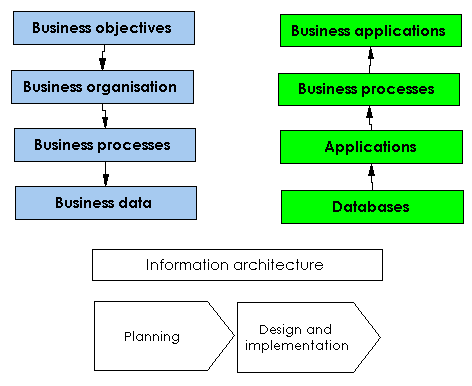Georgetown University
Georgetown School of Business
Business Systems Planning
Ewan Sutherland.
The need for BSP
Until the control and planning department was established, IBM had
little overall direction in the internal use of computers. If fact,
little coordination took place between divisions; most data processing
activities were confined to locations and units within divisions.
consequently, each manufacturing plan and marketing region
developed and operated its own system. Although the individual systems
carried out similar functions, they differed n design and
performance; they could not be used interchangeably and could not
communicate with each other.
Potential benefits
Information systems management:
- awareness of information systems within top management
- communication with top management
- methodology for staff to help meet business needs
- user involvement in setting priorities in information systems
Business Systems Planning
- focus on concept and design of integrated corporate database
and not on organisational structures or management techniques
- shift from individual applicatiosn to data and information
- idealistic in assuming that information systems can be built
from scratch
Stages of the BSP Processes
- gaining the committment
- preparing for the study
- starting the study
- defining business processes
- defining business data
- definign information architecture
- analysing current systems support
- interviewing executives
- determining architecture priorities
- reviewing information resource management
- reporting results

[Source: IBM (1984), page 9.]
From operational to management control: addressing the failings:
- failing to obtain executive commitment
- objectives and strategies out of line with overall
business objectives
- implementing information systems without
understanding the views of general management
- implementing new company-wide information systems,
rather than an evolving plan
- failing to pu in place Information Resources Management
functions to manage the information
Potential benefits to senior management
- an evaluation of the current effectiveness of the IS function
- a logical approach to solving management control problems
from a business perspective
- an assessment of future IS needs, based on business priorities
- a planned approach to give an early return on IS investments
- IS relatively independent of organisational structure
- greater confidence that IS management can deliver
Potential benefits to functional and operational management
- logical approach to help solve management and operational problems
- consistent data, usuabel and shared by all
- top managers involved and committed
- systems orientated to the needs of managers and users, rather
than to the needs of data processing
Copyright © Ewan Sutherland, 1994.


